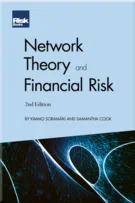Introduction to Value-at-Risk
Gianluca Fusai and Laura Ballotta
Introduction to Value-at-Risk
Introduction
May You Live in Interesting Times
The Dodd–Frank Act and its Impact on the Energy Industry
Assessing Regulatory Risk
Introduction to Price-Reporting Agencies
Fundamental Data in Energy Markets
European and Asian Natural Gas Market Developments – Swamped by the Present?
US Natural-Gas Markets
Managing Oil Price Risk: Dealing with the Time-Varying Relationship between the Price of Oil and Fundamentals
Electricity Markets: US
European Electricity Markets: Part I
European Electricity Markets: Part II
Coal
Energy Real Options: Valuation and Operations
Commodity-Based “Swing” Options
Gas Storage Pricing and Hedging
Valuation and Risk Management of Physical Assets
Arbitrage-Free Valuation of Energy Derivatives
Introduction to Value-at-Risk
Introduction to Portfolio Value-at-Risk
Introduction to Default Risk and Counterparty Credit Modelling
Credit Risk in Power and Gas Markets
Credit in the Energy Markets
INTRODUCTION
Uncertainty about commodity prices, foreign markets, new technologies, government policies, and even weather conditions can affect significantly firm earnings, so that a sound risk management plays an important role in many business decisions. This is important not only for banks, for which quite stringent rules are already at work, but also for corporate firms. Academic finance literature identifies at least three relevant issues associated with unpredicted earnings volatility: (1) higher expected costs of financial distress; (2) higher expected payments to corporate stakeholders (including higher rates of return required by owners of firms); and (3) lower tax payments due to reduction in the fluctuations of taxable income through suitable risk management policies.11For a detailed discussion on these themes, see Stultz (1996). From the management point of view, the decision about which risks to keep and which to hedge requires a comprehensive risk-audit review (Stulz 1996). The aim of this chapter is to present a modern approach to the risk measurement of a financial position through statistical techniques which allow to describe the profit and loss (henceforth P&L)
Copyright Infopro Digital Limited. All rights reserved.
As outlined in our terms and conditions, https://www.infopro-digital.com/terms-and-conditions/subscriptions/ (point 2.4), printing is limited to a single copy.
If you would like to purchase additional rights please email info@risk.net
Copyright Infopro Digital Limited. All rights reserved.
You may share this content using our article tools. As outlined in our terms and conditions, https://www.infopro-digital.com/terms-and-conditions/subscriptions/ (clause 2.4), an Authorised User may only make one copy of the materials for their own personal use. You must also comply with the restrictions in clause 2.5.
If you would like to purchase additional rights please email info@risk.net










